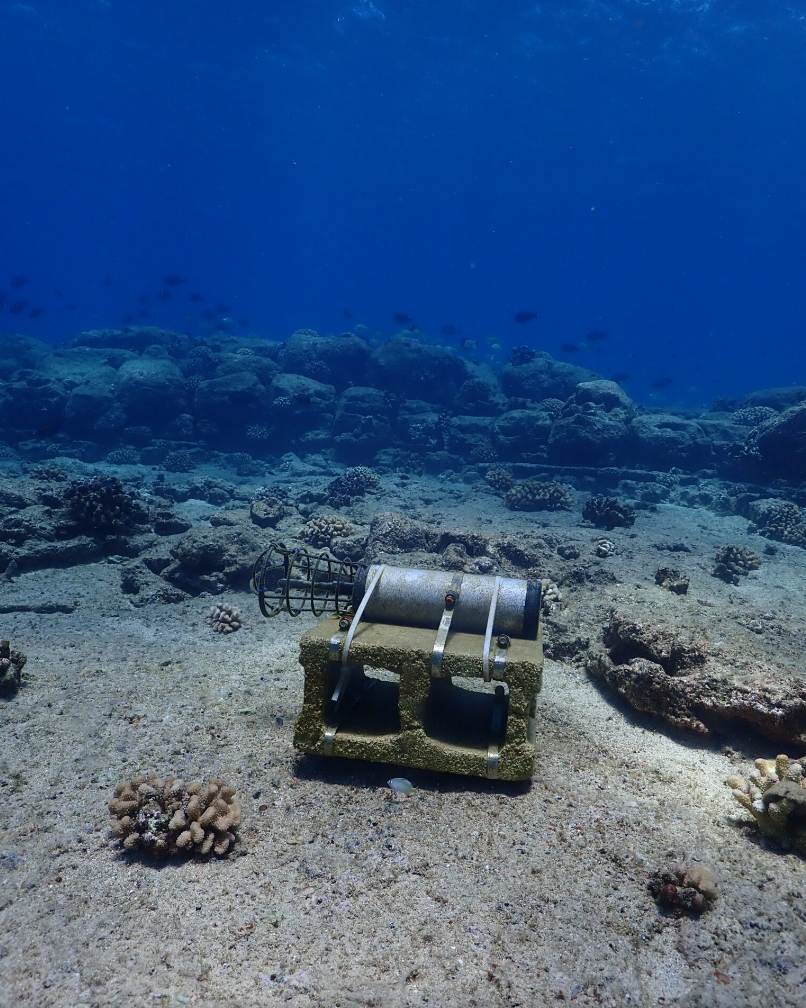New Publication: Hawaiian monk seal underwater soundscapes
- MMRP
- Jun 28, 2024
- 4 min read

Written by Kirby Parnell
We are pleased to share a new publication in Endangered Species Research, which describes the underwater soundscapes of Hawaiian monk seal critical habitats. This research encompasses Ph.D. Candidate Kirby Parnell’s first chapter of her dissertation and is her first, first-author publication! The manuscript is entitled: Underwater soundscapes within critical habitats of the endangered Hawaiian monk seal: Implications for conservation
Authors: Kirby Parnell, Karlina Merkens, Chloé Huetz, Isabelle Charrier, Stacie J. Robinson, Aude Pacini, Lars Bejder
Abstract:
Studying underwater soundscapes of critical habitats of marine mammals can provide valuable information on the acoustic environment utilized by sound-reliant animals. For the endangered Hawaiian monk seal (Neomonachus schauinslandi; HMS), the acoustic scene of their aquatic habitats is poorly understood. We measured ambient noise levels and characterized sound sources at four shallow critical habitats of the HMS. Broadband levels ranged from 107.8-123.4 dB re 1 µPa. Octave band levels showed diel patterns associated with biological and anthropogenic sources that mask HMS vocalizations. Biological sources dominated the soundscape at all sites. We opportunistically recorded two large-scale geophonic events: hurricane Douglas (Category 4) and a 6.2 magnitude earthquake. This study provides the first description of underwater soundscapes at critical habitats of the HMS across its expansive range. These measurements serve as a baseline for future studies to understand impacts of human activities on underwater soundscapes.
Study Overview:
The ocean is a noisy place. From chatty marine mammals to territorial fish and hungry shrimp, marine animals use sound to communicate, navigate, defend territories, and find food, mates, and safe spaces to settle down. However, human activities are negatively impacting the abilities of marine animals to effectively use sound for critical life functions. For the endangered Hawaiian monk seal with a population size of approximately 1,600 seals, we’re finding that vocal communication (Video 1) may play an important role for reproduction, yet we lack a foundational knowledge of the seals’ acoustic environment, better known as a soundscape.
Video 1: Spectrogram showing free-ranging Hawaiian monk seal vocalizations recorded at Lehua Rock. You can hear seal calls and snapping shrimp in the video.
We sought to describe the underwater soundscape, or the acoustic environment, at locations that Hawaiian monk seals utilize for foraging, breeding, communication, and other critical life functions. We wanted to know 1) how loud are ambient (background) sound levels, 2) are sound sources biological, geophysical, or manmade, 3) how do sound sources and levels change throughout the day, and 4) how does the soundscape compare between the densely human-populated main Hawaiian Islands and the remote Northwestern Hawaiian Islands. To do this, we deployed passive acoustic recorders, known as SoundTraps (Fig. 1), at four critical habitats of the Hawaiian monk seal: Rabbit Island (Mānana), Oahu; Lehua Rock, Niʻihau; French Frigate Shoals (Lalo); and Pearl and Hermes Reef (Manawai) (Fig. 2). The SoundTraps recorded sounds from 20 Hz up to 24 kHz – this includes low-frequency sounds like earthquakes to high-frequency sounds like dolphin echolocation.


In this study, we found that biological sounds produced by snapping shrimp, fish, and seals dominate and shape the underwater soundscapes at critical habitats of the Hawaiian monk seal (Fig. 3 & Video 2). Sound levels are generally loud at these nearshore reef environments. With little input from manmade sound sources at three of the four recording sites, we suspect that the elevated sound levels are indicative of healthy reef environments. This is good news for Hawaiian monk seals – low levels of manmade noise suggest less acoustic masking, making it easier for seals to hear and “speak” to each other under water. However, at the popular scuba diving site Lehua Rock, we found that manmade noise from boats and scuba divers masked monk seal vocalizations (the frequencies of manmade sounds overlap with the frequencies of monk seal vocalizations) (Fig. 4). We also opportunistically recorded sounds from Hurricane Douglas (Category 4) and a 6.2 magnitude earthquake around the time Kīlauea began erupting.
Overall, this study provides the first description of underwater soundscapes at Hawaiian monk seal critical habitats. These measurements can serve as a baseline for future studies to understand the impact of human activity on underwater soundscapes.

Video 2. A great example of the Hawaiian nearshore soundscape with monk seal vocalizations, snapping shrimp, and fish sounds. Video taken by Krista Jaspers.

Acknowledgements: We appreciate the support and contributions of the Hawaiian Monk Seal Research Program, especially Paige Mino, Jon Schneiderman, and the field camp teams at French Frigate Shoals and Pearl and Hermes Reef. We thank Captain Tara Leota, Captain Adam King, Captain Clay O’Laughlin, Jamie Thompton, Aaron Swink, and Jessie Hoffman for their assistance with the deployment and retrieval of the SoundTrap at Lehua Rock. We thank Jason Jones, Claire Lacey, Mykle Hoban, Phil Patton, Julia Hartl, Toby DuShane, and Clara Orr for assistance with the deployment and retrieval of SoundTraps at Rabbit Island. We thank River Corrado for assistance with earthquake analysis, Adriana Diaz for acoustic analysis of the Rabbit Island data, and Kyleigh Fertitta for acoustic analysis of the Lehua Rock data. We also thank Milton Garcés, Jessica Bohlander, and Yvonne Barkley for helpful comments on the manuscript. This work was supported by the Cooperative Ecosystems Study Unit and the University of Hawai‘i Mānoa’s Graduate Student Organization. The participation of K.P. was funded by the Gates Millennium Scholars Program. Research activities were conducted under NMFS permit no. 22677.
Full citation details: Parnell K, Merkens K, Huetz C, Charrier I, Robinson SJ, Pacini A, Bejder L (2024) Underwater soundscapes within critical habitats of the endangered Hawaiian monk seal: implications for conservation. Endangered Species Research 54:311–329. https://doi.org/10.3354/esr01336




Comments